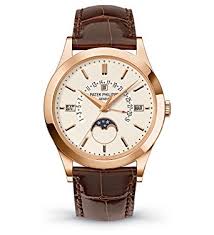Many models of the famous Swiss brand Rolex are referred to as "off-catalog" watches. They are usually not advertised or displayed publicly, as they are essentially exquisite museum pieces or custom-made for collectors and enthusiasts. Think of unique models like the legendary Rainbow Cosmograph Daytona, Leopard Daytona, Eye of the Tiger, SARU, or the limited-edition Day-Date watches with Arabic dials, encrusted with baguette-cut rubies, emeralds, sapphires, and more ✨
All these exceptional pieces share one distinctive feature that makes them masterpieces not only of watchmaking but also of jewelry craftsmanship — a unique fusion of timekeeping precision and luxury jewelry design. More precisely, it’s the special stone-setting techniques used to inlay the case, bezel, and dial.
Inlay and Gemology 🔍💠
Why are decorative techniques and the science of gemstones mentioned together? Because it’s the union of skill and knowledge that makes this ancient craft so vital in haute horlogerie. Alongside other techniques like enameling, engraving, and guilloché, Rolex's stone setting requires rigorous inspection and selection of precious stones.
Only the highest-quality diamonds, sapphires, rubies, and emeralds are used, each subjected to deep analysis — sometimes down to the molecular level. 💎 Diamonds are verified with X-ray or scanning equipment to ensure authenticity and purity. Rolex accepts only diamonds rated D, E, F, or G by the Gemological Institute of America for use in watches.
As for colored gemstones, key criteria include intensity and saturation. Each stone in a single piece must match in hue or, when arranged in a gradient, form a harmonious blend 🌈. This sorting is done entirely by hand — stone by stone. Only transparent, natural, internally flawless (IF) stones are used.
The Magic of Cut ✂️✨
Much of what a gemologist admires in a Rolex comes from the skill of the gem cutter. The correct cut allows light to penetrate and reflect, revealing the gem’s true color and brilliance. A well-cut diamond can even flash rainbow hues 🌈
Setting gems is not just about choosing the right cut — it also requires expert hands and tools: polishers, pushers, claws, burs, and more. For example, in the Rolex GMT-Master II SARU, sapphires and rubies are trapezoid-cut, while diamonds in other versions feature triangular cuts. Other GMT models include black sapphire & diamond (SANR) or blue sapphire & diamond (SA) editions, some fully diamond-paved — from dial to case to bracelet 💫
The Day-Date 40 with baguette diamond and emerald hour markers includes a fully pavé diamond dial. Emeralds are rare in Rolex watches, making them even more exclusive.
A Symphony of Mastery 🎼🛠️
Each unique Rolex model is a result of teamwork:
📐 Engineers — calibers, cases, bracelets
🎨 Designers — bring elegance and aesthetics
💎 Gem cutters and setters — precision artisans
Together, they determine ideal stone placements. Rolex tolerances are no more than 0.02 mm, about 1/4 the width of a human hair! 😮
Once placement is set, the cutter shapes the gem, and the setter fixes it delicately into the metal — applying just the right amount of pressure. Some stones are touched by a master’s hands up to 3,000 times. Final touches include polishing the metal prongs until they shine.
One hallmark of Rolex inlay is the bead setting method — stones held by 3–5 tiny prongs, similar to claw settings, often used for larger stones in "basket" shapes 🧺. Rolex also uses closed settings, especially for diamonds, where no metal is visible between the stones — just seamless brilliance🌟



